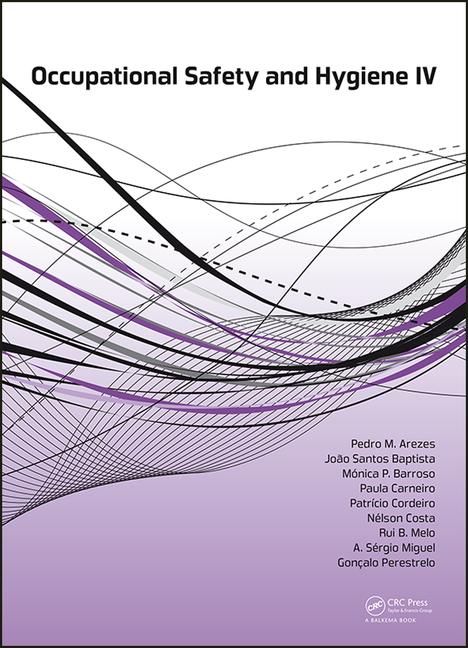 A preliminary total of 4,383 fatal work injuries were recorded in the United States in 2012, down from a revised count of 4,693 fatal work injuries in 2011, according to results from the Census of Fatal Occupational Injuries (CFOI) conducted by the U.S. Bureau of Labor Statistics. The 2012 total represents the second lowest preliminary total since CFOI was first conducted in 1992. The rate of fatal work injury for U.S. workers in 2012 was 3.2 per 100,000 full-time equivalent (FTE) workers, down from a rate of 3.5 per 100,000 in 2011.
A preliminary total of 4,383 fatal work injuries were recorded in the United States in 2012, down from a revised count of 4,693 fatal work injuries in 2011, according to results from the Census of Fatal Occupational Injuries (CFOI) conducted by the U.S. Bureau of Labor Statistics. The 2012 total represents the second lowest preliminary total since CFOI was first conducted in 1992. The rate of fatal work injury for U.S. workers in 2012 was 3.2 per 100,000 full-time equivalent (FTE) workers, down from a rate of 3.5 per 100,000 in 2011.
Over the last 5 years, net increases to the preliminary count have ranged from 84 in 2011 to 211 in 2009. The revised 2011 figure represented a 2 percent increase over the preliminary total, while the 2009 figure was a 5 percent increase. Revised 2012 data from CFOI will be released in the late Spring of 2014.
Key preliminary findings of the 2012 Census of Fatal Occupational Injuries:
-Fatal work injuries in the private construction sector increased 5 percent to 775 in 2012 from 738 in 2011. Total hours worked in the private construction industry increased one percent in 2012. The increase in fatal occupational injuries in 2012 follows five consecutive years of declining fatal injury counts in the construction sector. Fatal construction injuries are down 37 percent since 2006.
-Since 2011, CFOI has identified whether fatally-injured workers were working as contractors at the time of the fatal incident. In 2012, 708 decedents were identified as contractors, many of whom worked in construction and transportation occupations.
-Fatal work injuries declined among non-Hispanic white workers (down 10 percent) and Hispanic or Latino workers (down 5 percent) in 2012. Fatal work injuries were higher among non-Hispanic black or African-American workers and non-Hispanic Asian workers.
-Fatal work injuries involving workers under 16 years of age nearly doubled, rising from 10 in 2011 to 19 in 2012—the highest total since 2005. Fatal work injuries in the other age groups declined in 2012. Fatal work injuries among workers 55 years of age and older declined for the second straight year.
-Work-related suicides declined 10 percent from 2011 totals, but violence accounted for about 17 percent of all fatal work injuries in 2012.
-Fatal work injuries in the private mining sector rose in 2012, led by an increase in fatal injuries to workers in oil and gas extraction industries. Fatal work injuries in oil and gas extraction industries rose 23 percent to 138 in 2012, reaching a new high for the series.
Worker characteristics
The number of fatal work injuries involving non-Hispanic white workers declined 10 percent in 2012, but rose by 13 percent for non-Hispanic Asian workers. Despite the increase, Asian workers still recorded a lower rate of fatal injury than the rate for workers overall (1.8 per 100,000 FTE workers for non-Hispanic Asians versus 3.2 per 100,000 FTE workers for workers overall).
Fatal work injuries among Hispanic or Latino workers dropped to 708 in 2012 from 749 in 2011, a decrease of 5 percent.
Of the 708 fatal work injuries incurred by Hispanic or Latino workers, 454 (or 64 percent) involved foreign-born workers. Overall, there were 777 fatal work injuries involving foreign-born workers in 2012, of which the greatest share (299 or 38 percent) were born in Mexico.
Fatal work injuries increased for workers under 16 years of age, rising to 19 in 2012 from 10 in 2011, reaching its highest level since 2005. Fourteen of these young decedents were employed as agricultural workers. Fatal work injuries involving men fell from 4,308 in 2011 to 4,045 in 2012—the lowest total since the inception of the fatality census in 1992.
Fatal injuries to both wage and salary workers and self-employed workers declined in 2012.
For more detailed information on fatal injuries by occupation, see the 2012 tables at www.bls.gov/iif/oshcfoi1.htm.
Type of incident
Transportation incidents accounted for more than 2 out of every 5 fatal work injuries in 2012. (See chart 1.)
Of the 1,789 transportation-related fatal injuries, about 58 percent (1,044 cases) were roadway incidents involving motorized land vehicles. Nonroadway incidents, such as a tractor overturn in a farm field, accounted for another 13 percent of the transportation-related fatal injuries. About 16 percent of fatal transportation incidents in 2012 involved pedestrians who were struck by vehicles. Of the 283 fatal work injuries involving pedestrians struck by vehicles, 65 occurred in work zones. (Note that transportation counts presented in this release are expected to rise when updated 2012 data are released in Spring 2014 because key source documentation detailing specific transportation-related incidents has not yet been received.)
Fatal work injuries among those fatally injured in aircraft incidents in 2012 declined by 14 percent from 2011, accounting for 125 fatalities or about 7 percent of the transportation total.
Overall, 767 workers were killed as a result of violence and other injuries by persons or animals, including 463 homicides and 225 suicides. The work-related suicide total for 2012 declined 10 percent from the 2011 total and the homicide total was also slightly lower. Shootings were the most frequent manner of death in both homicides (81 percent) and suicides (48 percent). Of the 338 fatal work injuries involving female workers, 29 percent involved homicides.
Fatal falls, slips, or trips took the lives of 668 workers in 2012, down slightly from 2011. Falls to a lower level accounted for 544 or about 81 percent of those fatalities. In 2012, the height of the fall was reported in 437 of the fatal falls to a lower level. Of those cases, about one in four occurred after a fall of 10 feet or less. Another one-fourth of the fatal fall cases occurred from falls of over 30 feet.
While the total number of fatal work injuries involving contact with objects and equipment in 2012 remained about the same as in 2011, the number of workers fatally injured after being struck by objects or equipment increased by 7 percent (to 509 fatal work injuries in 2012 from 476 in 2011). This total includes 233 workers struck by falling objects or equipment and 199 struck by powered vehicles or mobile equipment not in normal operation.
There were 142 multiple-fatality incidents in 2012 (incidents in which more than one worker was killed) in which 341 workers died.
For more detailed information on fatal injuries by incident, see the 2012 tables at www.bls.gov/iif/oshcfoi1.htm.
Next: Information on occupational fatalities by injury and occupation, plus a new effort to count contractors









